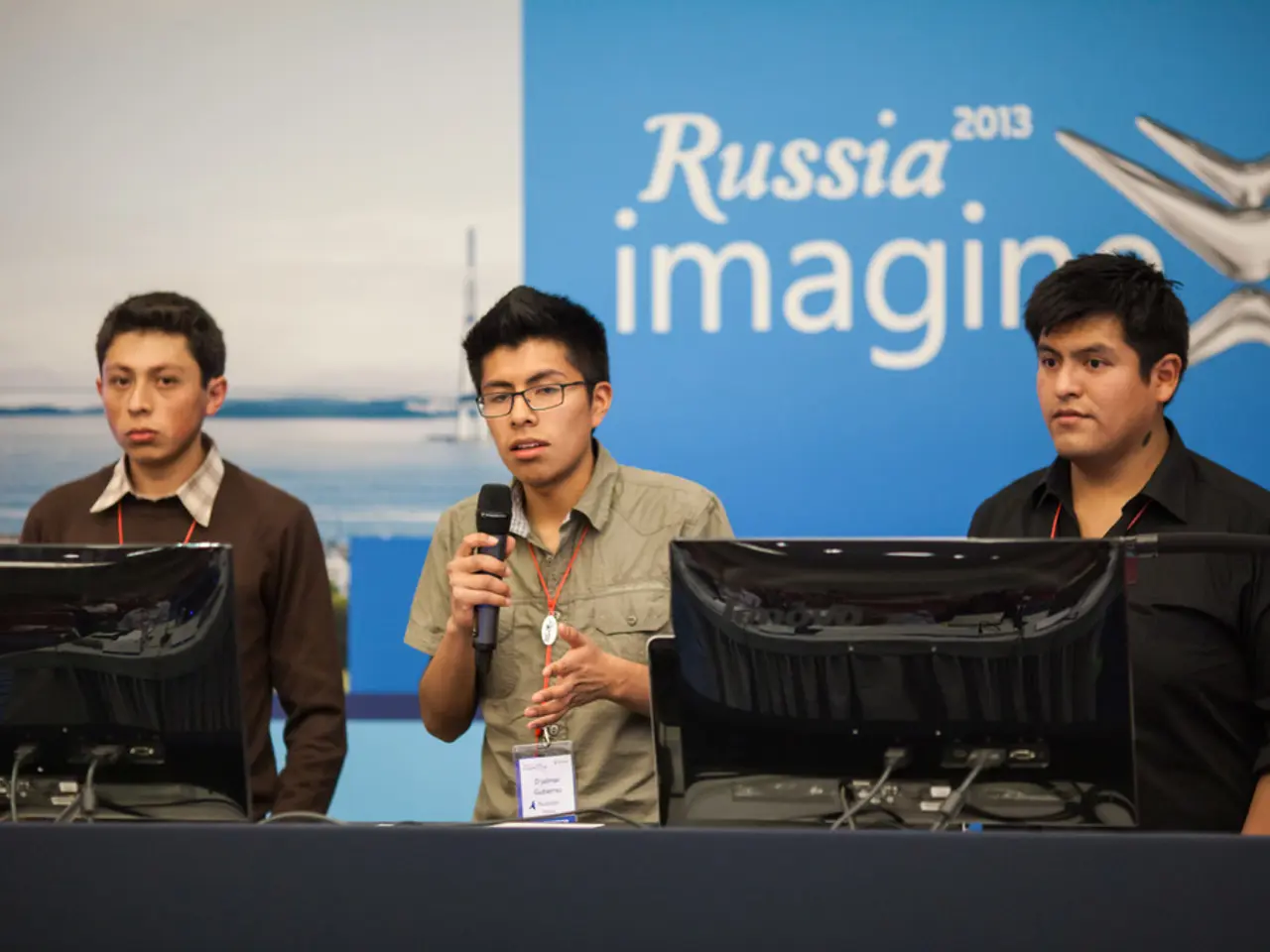Gold reserves in Russia are running out.
Gold Mining in Russia: Challenges and Opportunities
Following the launch of major gold projects like Sukhoy Log and Chertovo Koryto, as well as extensive copper-gold deposits such as Peshchanka and Malymyzhskoe, Russia's mined gold reserves might decrease to a 15-year supply. This prediction was made by Alexey Kobzev, an expert from the consulting company "Yakov and Partners", at the "Gold 2025" conference hosted by Creon.
More than 60% of Russia’s gold reserves belong to mines that have been operational for over 50 years, and funding for long-term geological exploration has dropped dramatically. This observation was shared by Kobzev.
Last year, investment in Russian gold mining saw a significant drop. The majority of projects, over 80%, had budgets of less than 500 million rubles, indicating a predominance of small-scale initiatives, added Vice-President of the Association "Mining Industry of Russia" Anatoly Nikitin.
Fares Kilzie, head of Creon Group, called gold an instrument of the new geo-economy, in which Russia has the potential to play a significant role. However, according to Nikitin, the potential of gold in Russia as a financial stabilizer is limited due to deep-seated issues in the mining industry.
"First, there’s a crisis in the mineral resource base. As of early 2023, 92.8% of category A, B, C1, and 96.1% of category C2 reserves are already allocated, with large deposits almost absent from the distributed fund. Second, the legislation restricts the exploitation of technogenic sands, and their potential reserves are estimated at 2,500 to 3,000 tons. Only 30 technogenic sites are accounted for in the state budget, with reserves of 48.3 tons," Nikitin explained.
Victor Tarakanovsky, head of the Russian Miners Union, pointed out that regulators fail to understand the specifics of the industry, forcing artisanal gold mines to pay unwarranted fines for alleged unrecorded reserves. Furthermore, a methodology for evaluating technogenic reserves has not yet been developed. In light of this, Nikitin called for regulatory reform, streamlined licensing, and the abolition of unnecessary audits for the exploitation of technogenic sands.
On the other hand, gold prices have hit record highs. According to the Association "Mining Industry of Russia", gold prices are expected to reach $3,700 per troy ounce in 2025.
Daria Tarasenko, Senior Analyst at Gazprombank, noted that gold has always had an extremely high correlation with real interest rates in the United States. However, since 2022, this correlation has disappeared. "Current forecasts for gold prices are now decoupled from traditional macroeconomic variables," she stated.
Despite high prices, a historical record in gold demand was reported last year. Part of this increase can be attributed to gold purchases made by global central banks, which have exceeded 1,000 tons for the third consecutive year, as stated by Tarasenko.
The National Bank of Poland was the largest gold buyer last year, according to World Gold Council data. Generally, developing countries have been the most active gold buyers in recent years. Although the top three countries in gold reserves in storage have remained unchanged. These are the United States, Germany, and Italy.
"Gold remains a quiet harbor in times of economic instability. However, the role of gold as a defensive asset in Russia is underappreciated," Nikitin concluded.
Insights into the Challenges and Opportunities of Russian Gold Mining:
- Complex Operating Environment: Russian mining entities face difficulties from international sanctions and trade tensions, which affect financial results and access to global markets. To circumvent reputational and sanction-related barriers, companies must demonstrate compliance with global ethical and environmental standards.
- Technological and Infrastructure Gaps: Extraction from technogenic deposits requires advanced technology and expertise to process low-grade ore materials effectively. The challenge is modernizing mining techniques and infrastructure to economically process technogenic materials while maintaining environmental standards.
- Environmental and Regulatory Concerns: Mining technogenic deposits implicates environmental concerns regarding waste handling and pollution. Ensuring sustainable practices that meet increasingly stringent environmental regulations remains a hurdle.
- Market Access and Certification: Russian firms aiming to export refined gold must obtain internationally recognized certifications to ensure responsible sourcing and quality. These certifications involve rigorous audits for environmental compliance and conflict-free sourcing, which can be difficult under sanctions and reputational hurdles.
- Investment in Advanced Technologies: To efficiently extract gold from technogenic sources, Russia must invest in state-of-the-art processing technologies. This includes upgrading assay laboratories and smelting technologies, similar to those planned in partnerships abroad.
- International Collaboration: Russian companies can benefit from partnerships with African gold-producing countries like Mali to establish refining capabilities. These collaborations may foster technology transfer for domestic projects.
- Focus on Technogenic Deposits: Given the depletion of accessible primary deposits, expanding the exploration and exploitation of technogenic deposits offers a strategic way to sustain gold production in Russia. Research and pilot projects that optimize extraction from mining waste offer a means to turn environmental liabilities into economic assets.
- The potential of gold in Russia as a financial stabilizer is limited due to deep-seated issues in the mining industry, such as a crisis in the mineral resource base, legislative restrictions on the exploitation of technogenic sands, and the lack of a methodology for evaluating technogenic reserves (Nikitin).
- To sustain gold production in Russia, focusing on the exploration and exploitation of technogenic deposits can offer a strategic way to offset the depletion of accessible primary deposits, with research and pilot projects that optimize extraction from mining waste transforming environmental liabilities into economic assets (Implied).




